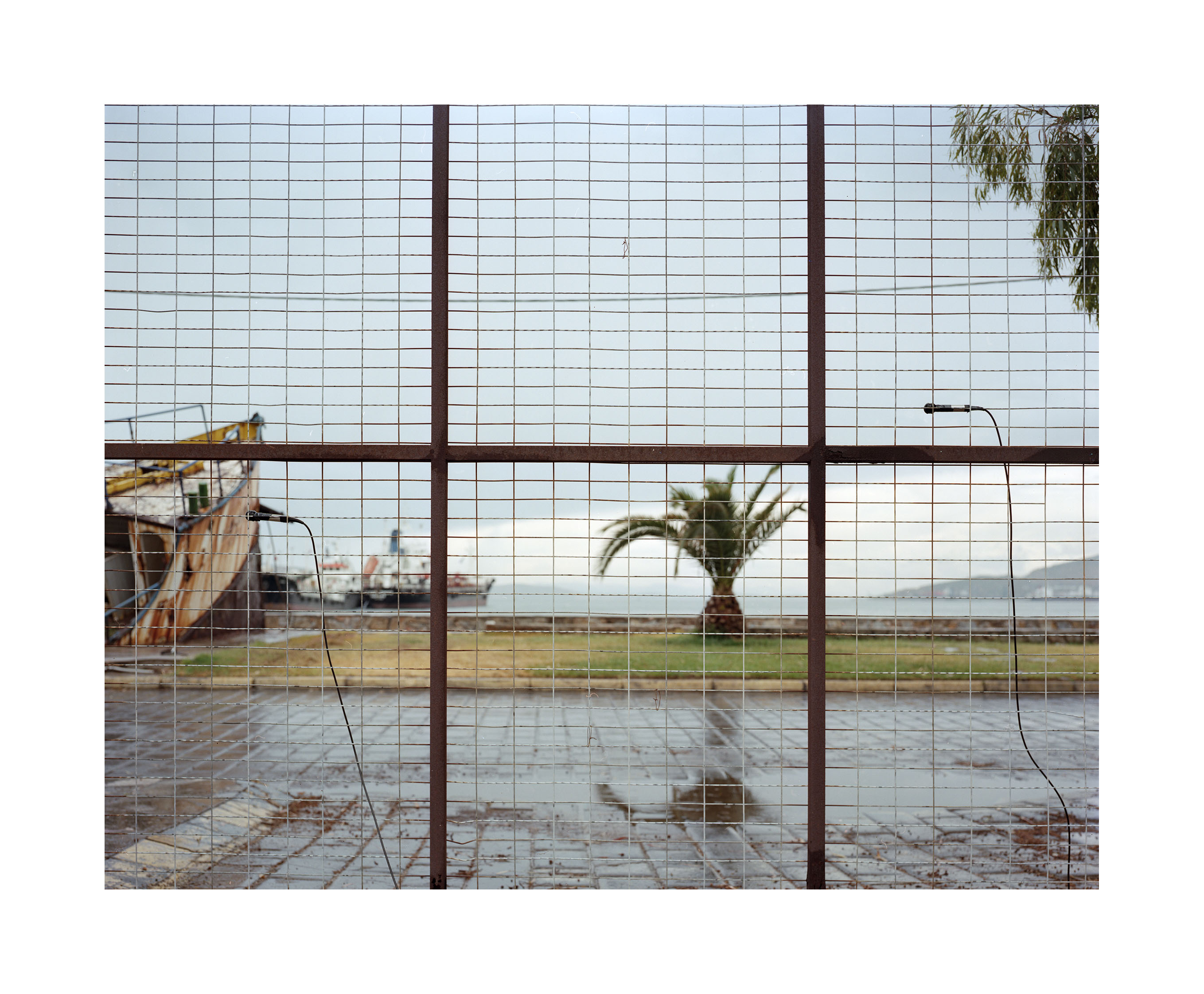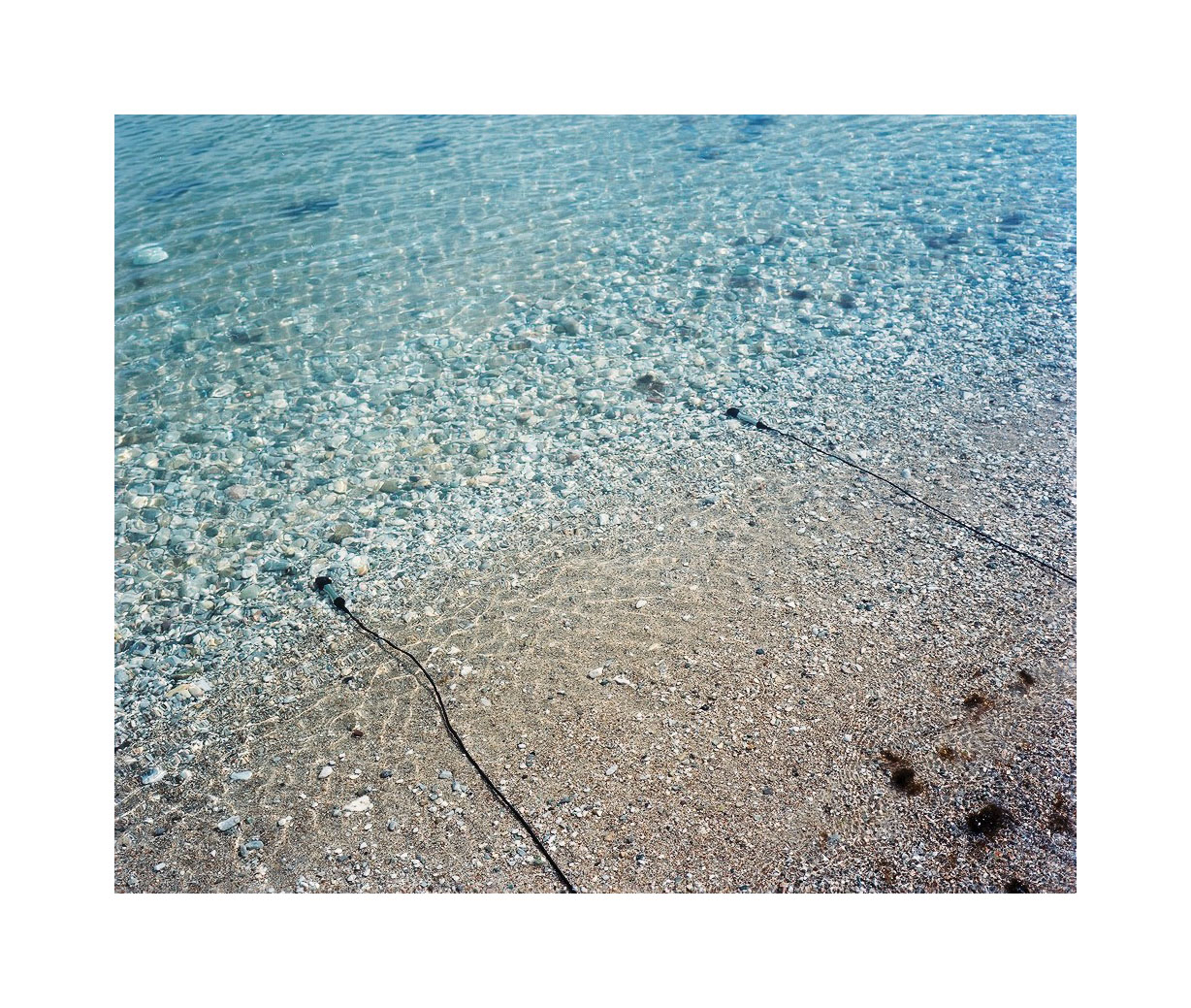Tarek Atoui’s “The Ground: From the Land to the Sea”
By Marcus Yee

Installation view of TAREK ATOUI’s "The Ground: From the Land to the Sea," NTU Centre for Contemporary Art Singapore, 2018. Courtesy NTU Centre for Contemporary Art Singapore.
A strange etymological affinity between “composition” and “compost”—both taken from the Latin componere, meaning “to put together, to collect whole from several parts”—found its way into Paris-based, Lebanese sound artist Tarek Atoui’s most recent solo exhibition, “The Ground: From the Land to the Sea.” Following Atoui’s preoccupation with the latent possibilities of sound composition, the exhibition was devised for both an immediate encounter and a durational unfolding, where processes of deep listening, activation and collaboration were crucial in "de-composing" the encoded expectations of performance.

TAREK ATOUI, I/E, 2015, photo documentation of recordings in Athens. Copyright Alexandre Guirkinger. Courtesy the artist.

TAREK ATOUI, I/E, 2015, photo documentation of recordings in Athens. Copyright Alexandre Guirkinger. Courtesy the artist.
Upon entering the gallery, one is immediately immersed in aural washes of trickling water and snapping shrimp emanating from a nearby speaker. Crackling static from maritime communications punctuates this repose. These were sounds taken from the project I/E (2015– ), a growing library of field recordings from harbors and coastlines by Atoui and his collaborator, French sound artist Éric La Casa. Moving around the garland of twelve speakers, one hears the dawn chorus of Elefsina, a city on the outskirts of Athens, emanating from the corner of the gallery, occasionally blending into the mangrove song of cicadas. The listener was enfolded within a continuum of sound, space and moving bodies, rather than dissolved into an unintelligible sonic bath.
Drawn from cities such as Abu Dhabi, Athens and Singapore, the composition of field recordings revealed the connective tissue between the land and the sea as a dynamic constellation of trade, security, ritual and ecology. Diverging from the academic discipline of ecoacoustics, these recordings did not claim to be a mimetic documentary of site. Instead, Atoui emphasized sonic abstraction, an untethering of sound from location that brings to mind Robert Smithson’s distinction between the site and non-site. This paradoxical encounter with the soundscape chimed between placement and displacement, immersion and attention. By lending a listening ear to the circumambient track of place, the location became at once foreign and intimate.
Instruments developed for The Ground (2017)—a five-year project in collaboration with Mirrored Gardens, a field-cum-creative space in rural Guangzhou that falls on the intersections between contemporary art and agricultural practices—produced further resonances between sound and site as they transposed the artist’s observations on agricultural, architectural and craft practices along the Pearl River Delta. Collections of such instruments were on display in The Spin Library and The Turntable / Study #1 (both 2018), which were more resonantly environmental in their formal interplay of sound and materiality, as opposed to the indexing of nature. Listeners were re-tuned to the contact between surfaces as a locus of sound. The set-up involved a collection of ceramic discs played on a record player, hacked to synchronize with external sounds. A wide selection of styluses, from branches to feathers, traced the granules and grooves of the gyrating discs, some beating to rhythms derived from classical Arabic music.

Installation view of TAREK ATOUI’s The Trichord, 2017, string instrument, dimensions variable, at
Likewise, The Trichord (2017) was an instrument playable by both hearing and deaf persons. Aside from plucking its strings, the pressure of one’s hand on the instrument’s dense wooden frame absorbs its reverberation, thus modulating the feedback loop. To listen is also to feel its vibrations across the floor, the eddying of the air. Developed for WITHIN—a project exploring diverse ways of experiencing sound by deaf and hearing people—The Trichord was not merely an instrument for the symbolic inclusion of the deaf, but also for hearing persons to experience multimodal ways of listening. These instruments intertwined tactile, visual and aural elements, transporting one to a sensorium where sound is unignorably relational, inseparable from its very plasticity.
Collaboration invoked another ecology in the exhibition. Atoui, together with Singaporean music curator Mark Wong, and sound artists Yuen Chee Wai and Vivian Wang, invited a host of sound practitioners—many of whom are from Singapore’s experimental music scene—to tinker with the installations throughout the exhibition’s run. Vivian Wang, the first of twelve guests, mentioned “a sense of bliss” from her explorations, and that learning to play the instruments was like “getting to know someone”, a process that was not undergirded by mastery. Without the pressure to perform, these interventions accumulated into an abundance of tactics in hearing and playing for the committed listener, unraveling the contingent, prototypical ethos behind these instruments.
“The Ground” transformed the gallery into a sonorous instrument, a jamming studio, or a listening alcove, flouting any expectations of finish and fidelity. After all, the authoritative score is mere paper—material for compost. It is in the breakdown of sound that capacious ways of listening, or rather, sensing, re-emerges.
Tarek Atoui’s “The Ground: From the Land to the Sea” is on view at the NTU Centre for Contemporary Art Singapore until June 24, 2018.







